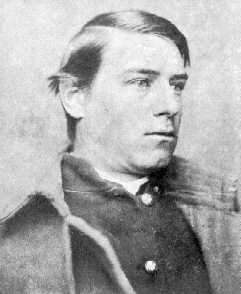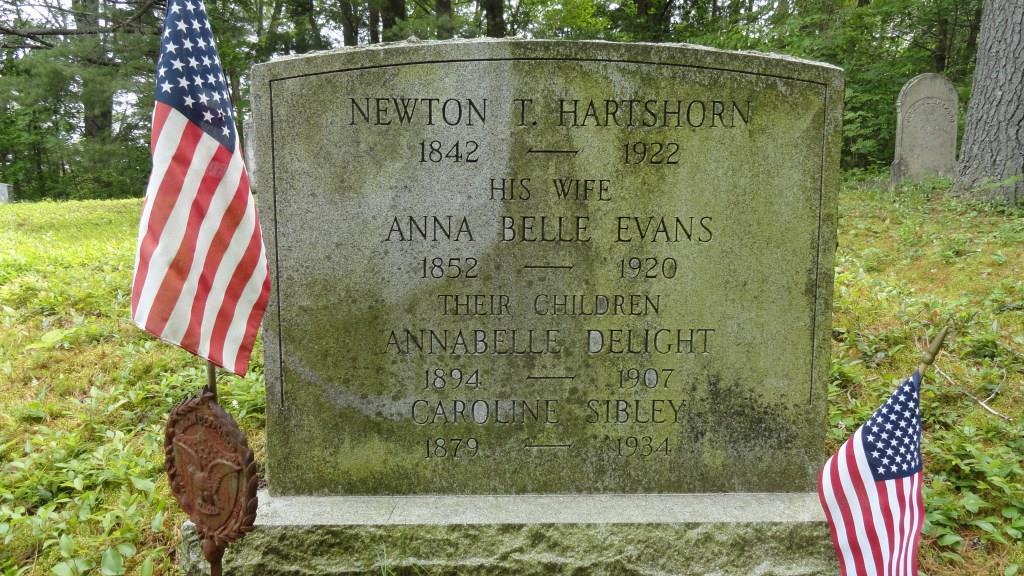His greatest achievement was the charcoal sketch he did of Ulysses S. Grant. The remarkable sketch together with a letter of introduction from the president served him well. He painted the portraits of many prominent persons, both in this country and those he executed in Europe during his two trips there. During one of these trips, he stayed in the Hartshorn House in the village of Hartshorn, Derbyshire. In was in this house that Sir Walter Scott wrote the book, Ivanhoe. He reflected on the origins of the Hartshorn family and did a brief genealogical study.
Many of the portraits that he painted presently hang in libraries and museums in New England. Several are on display at the Baker Library at Dartmouth College. Some of his commissions were paid for with merchandise in kind. One such painting made of the president of the International Silver Company was paid for with a complete silver service. A serving pitcher from this service is presently in the possession of this compiler, as well as letters of commendation, including one signed by President Ulysses S. Grant.
Newton Hartshorn was satisfied to live off the laurels of his artist's reputation and did little else to sustain himself or his family in his later years. He became a gentleman farmer, retiring to Sandisfield, in the foothills of western Massachusetts. During the autumn harvest, he could be seen with a horse-drawn wagon, taking a load of home-grown apples to market in Boston, a distance of over 125 miles. He suffered from stomach cancer and spent his remaining months with daughter, Caroline, in Springfield, Massachusetts. He died on 28 Mar 1922 at the age of 80 in Springfield, Hampden County, Massachusetts. Newton was buried in South Sandisfield Cemetery, Sandisfield, Berkshire County, Massachusetts..
His greatest achievement was the charcoal sketch he did of Ulysses S. Grant. The remarkable sketch together with a letter of introduction from the president served him well. He painted the portraits of many prominent persons, both in this country and those he executed in Europe during his two trips there. During one of these trips, he stayed in the Hartshorn House in the village of Hartshorn, Derbyshire. In was in this house that Sir Walter Scott wrote the book, Ivanhoe. He reflected on the origins of the Hartshorn family and did a brief genealogical study.
Many of the portraits that he painted presently hang in libraries and museums in New England. Several are on display at the Baker Library at Dartmouth College. Some of his commissions were paid for with merchandise in kind. One such painting made of the president of the International Silver Company was paid for with a complete silver service. A serving pitcher from this service is presently in the possession of this compiler, as well as letters of commendation, including one signed by President Ulysses S. Grant.
Newton Hartshorn was satisfied to live off the laurels of his artist's reputation and did little else to sustain himself or his family in his later years. He became a gentleman farmer, retiring to Sandisfield, in the foothills of western Massachusetts. During the autumn harvest, he could be seen with a horse-drawn wagon, taking a load of home-grown apples to market in Boston, a distance of over 125 miles. He suffered from stomach cancer and spent his remaining months with daughter, Caroline, in Springfield, Massachusetts. He died on 28 Mar 1922 at the age of 80 in Springfield, Hampden County, Massachusetts. Newton was buried in South Sandisfield Cemetery, Sandisfield, Berkshire County, Massachusetts..
Family Members
-
![]()
Timothy Newton "Newtie" Hartshorn
1865–1872
-
![]()
Elizabeth Hartshorn Tholander
1867–1958
-
![]()
William "Willie" Hartshorn
1870–1872
-
![]()
Grant Romney Hartshorn
1874–1962
-
![]()
Caroline Sibley Hartshorn
1879–1934
-
![]()
Derick Sibley Hartshorn Sr
1883–1967
-
![]()
Grace Hartshorn Westerfield
1885–1974
-
Alice Hartshorn
1886–1887
-
![]()
Owen Albert Hartshorn
1887–1940
-
![]()
Edalma Hartshorn
1888–1888
-
![]()
Annabelle Delight Hartshorn
1894–1907
-
![]()
Rachel Pearl Hartshorn Dickinson
1898–1954
Sponsored by Ancestry
Advertisement
Advertisement




















